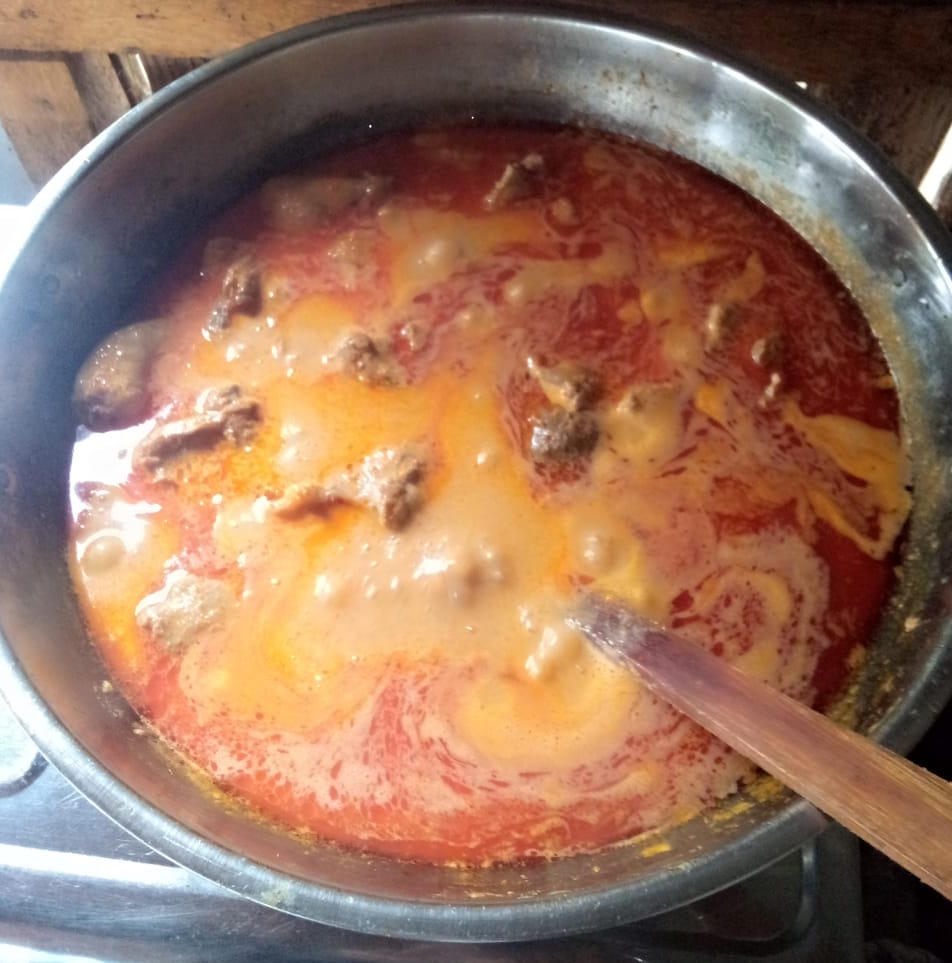The Participant Observer Recipe of the Month is for Spanish Gambas al Ajillo. Only taking about 10 minutes to prepare this scrumptious dish is a very popular in tapas bars.
![]()
"Gambas al ajillo" simply means "prawns with garlic". Camarones al ajillo (shrimp with garlic) and Pescado al ajillo are identical dishes only with different seafood. The standard ingredients for the dish are shrimp, garlic, olive oil, dried chilies, paprika, dry sherry or white wine, and flat-leaf parsley as a garnish. The dish hails from Andalusia in Southern Spain but is now found throughout Spain, and it is a common menu item in Spanish restaurants throughout the world.
Tapas is a style of eating not dissimilar to Chinese dim sum. Small plates of food (appetizers) are offered to customers who pick the items they want to eat. It solves the problem found in many American restaurants of leftovers (which are often thrown out). We have published other tapas dishes such as Seafood Totillas, Pescao en Escabeche and the classic Tortilla de Patata, but other tapas include Jamon Serrano (Serrano chilies stuffed with cured and dry ham), Boquerones en Vinagre (marinated anchovies), Patatas Bravas (fried potatoes in tomato sauce), Espinacas con Garbanzos (spinach and chickpeas), Calamares fritos (fried calamari rings) and even just olives, cheese or other foods. Tapas bars are very popular in Spain and are a place where friends and family get together to socialize.
Preparing Gambas al ajillo couldn't be easier. When made in Spain, it is most common to use headless, peeled, deveined shrimp with their tails on. This dish can, and typically is, eaten with your hands, so cooking the shrimp with their tails makes handling them easier. When I cooked this dish, I defrosted and shelled shrimp and then dried and fried the shells for a few minutes in olive oil to impart their flavor to the sauce. I believe that the amounts of olive oil recommended in most recipes for the dish are too small. Creating a sauce in that one can dip the crusty bread is an important aspect of the enjoyment of this dish. I used 3/4 a cup, but next time I will use 1 to 1 1/4 cups! Some places in Spain serve a small dish of the seasoned oil on the side. I started this recipe by defrosting shell-on shrimp. I removed the shells and sautéed them in the olive oil, removing them after 2 minutes. I then proceeded to sauté the garlic. The goal is to sauté the garlic just to the point that it starts browning. Then add the shrimp and sauté until the shrimp are white throughout. It should only take 2 to 3 minutes. Try not to overcook the shrimp. add the remainder of the ingredients and mix thoroughly. Please note, the sherry or wine does not need to be cooked away in this recipe. The choice of chilies is up to you! Presumably, the best oil to use is Spanish extra-virgin oil, but we used Costco Kirkland Signature 100% Italian Extra Virgin Olive Oil which is not too heavy and is good for a dipping sauce. Occasionally Gambas al Ajillo is served over rice or even used mixed with pasta.
Some notes about prawns and shrimp:
Prawns and shrimp are almost identical in taste (some think prawns are sweeter), but they differ in that prawns tend to be larger in size, live in brackish water (as opposed to the ocean or sea), and have more claws than shrimp. However, in the fishing industry, the terms are often used interchangeably (and indeed this is true of most of the recipes I researched for this article). Shrimp are the number one seafood consumed in Spain. Most recipes for Gambas al ajillo call for jumbo shrimp or larger, but in Spain, smaller shrimp are more commonly used. Around 90 percent of shrimp consumed in the US are imported, and around 29 percent of imported shrimp come from farms. As we have noted in other recipes, it is nearly always best to buy shrimp (and most other seafood) frozen. Most typically, shrimp or fish that is sold "fresh" was previously frozen on the fishing vessels that net or catch the seafood or the seafood farms shrimp are grown on. Freezing seafood has the added benefit of killing parasites in seafood, and in Japan, all fish served raw by law must be previously frozen. Defrosting the shrimp in cold salted water helps them to retain moisture when they are cooked.
Ingredients:
- 1 cup extra-virgin olive oil
- 1 1/2 pounds shelled and de-veined large shrimp, tails intact
- 10-12 large cloves of garlic sliced thin
- 1 tablespoon sweet or hot paprika (mostly for color)
- 1 tablespoon chili flakes
- Juice of 1 lemon
- 1/4 cup dry sherry or white wine
- 1/2 cup chopped parsley
- Crusty bread for dipping
Preparation:
- Defrost and de-shell the shrimp, but leave the tails on.
- Slice the garlic cloves thinly.
- Sauté the garlic slices in the oil over medium heat.
- Drain, pat dry with a paper towel the shrimp, and add them to the pot.
- Stir the shrimp in the hot oil until they are fully cooked (again, don't overdo it!).
- Mix in the sherry, paprika, chili flakes, lemon juice, and chopped parsley.
- Serve with other tapas dishes (or alone) and use the now-seasoned sauce as a dipping sauce for the bread.
Buen Provecho!
Recipe by T. Johnston-O'Neill
Photos by Shari K. Johnston-O'Neill









